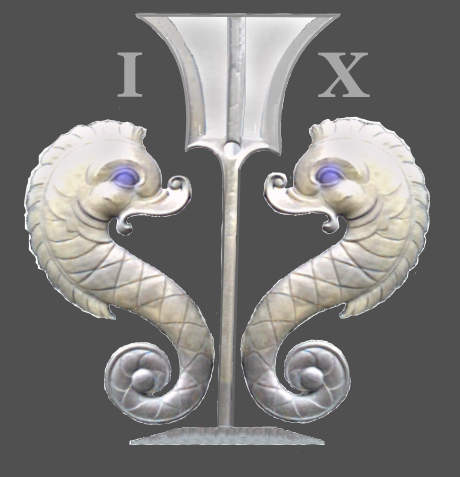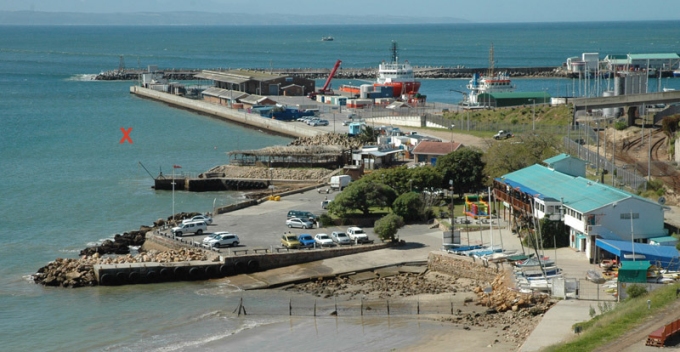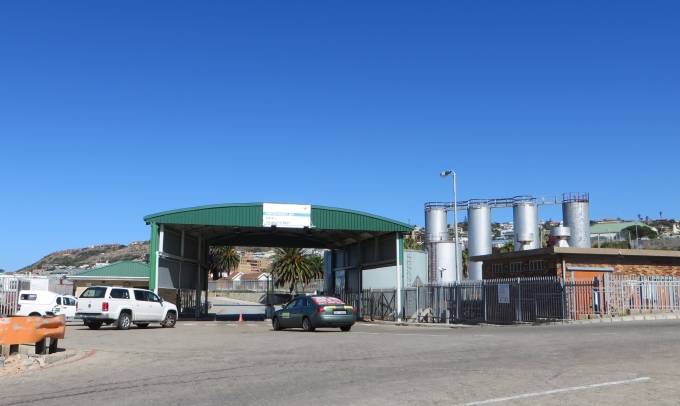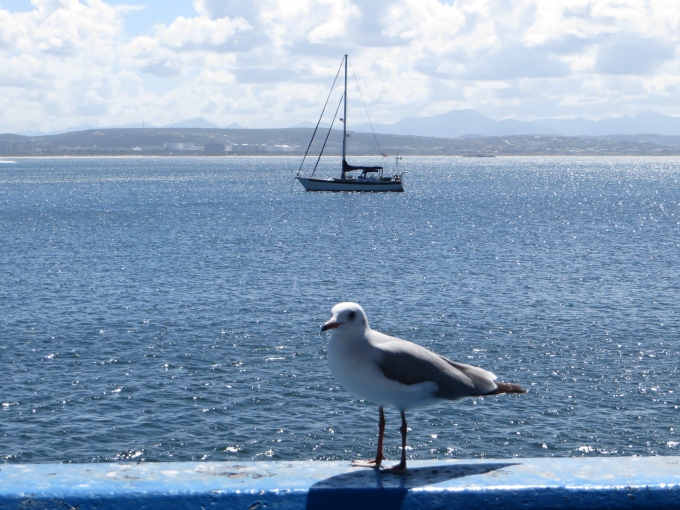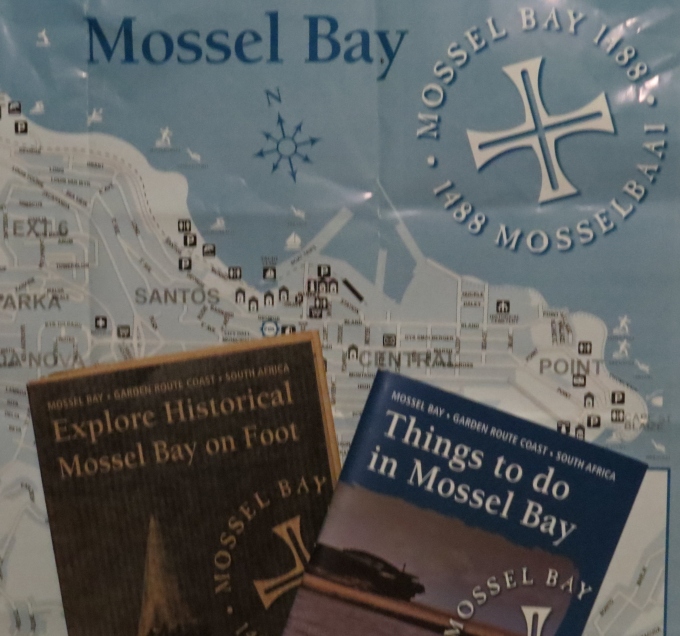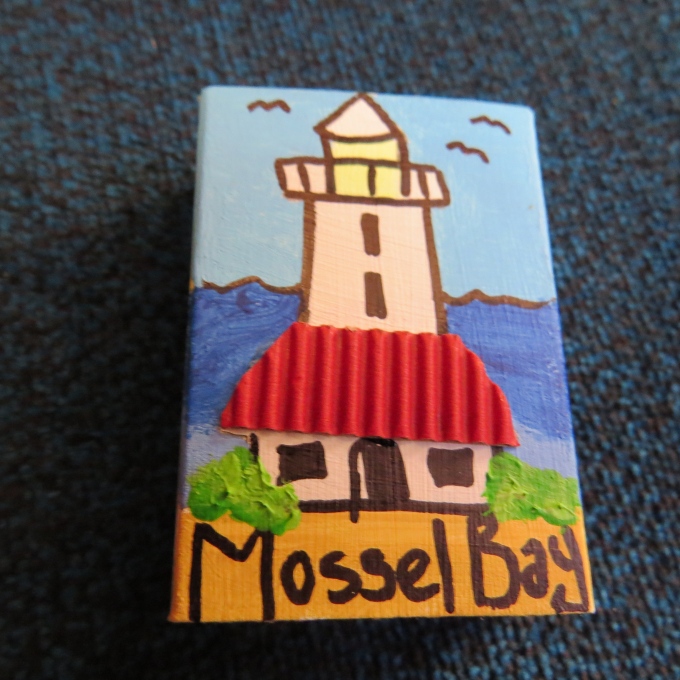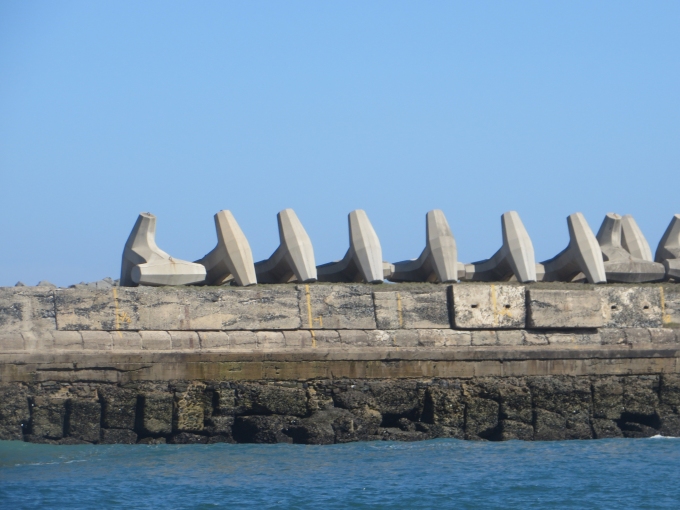Discovering Mossel Bay
/Reconnaissance First
Mossel Bay (Mosselbaai) is a small port city of ~60,000 people on the southern South Africa coast, midway between Port Elizabeth and Cape Town. We've sailed into yet another province, the Western Cape. It was here on the shores of Mosselbaai that the Portuguese explorer, Bartolomeu Dias and his crew first set foot on South African soil in February 1488 … the first Europeans to do so. He named the bay, Angra dos Vaquieros (Bay of Cowherds?), but thankfully, it was later changed by the Dutch to Mossel Bay because of the plentiful supply of mussels and oysters found here. By the way, Dias and his crew didn't explore much on their first foray ashore. They made a hasty retreat when the locals threw stones at them.
After a restful night, we woke mid-morning to a sunny, gorgeous day. We launched the dink and dinghied inside the breakwater for a tie-up at the small marina dock. This required us to go through the Port Control gates to exit on foot, but after a short explanation to the guards, they let us come and go without a hassle.
Our stomachs dictated our first stop. The Sea Gypsy, claiming to have the “freshest fish on the water”, is right at the port gates and looked like a lovely place for a seafood lunch … and it was.
We sat outside under a tent at one of their blue and white picnic tables and watched gulls jockey for the best position to watch us eat our lunch.
We had a great view of Cups from our table.
Today was a reconnaissance trip. I'd read a bit about Mosselbaai, but we wanted to get the lay of the land. After lunch, we stopped at the friendly Mosselbaai Yacht Club where they offered us all the amenities the club had to offer. The Tourist Info building was just up the hill from the port. We picked up a city map and several brochures. This is a tourist town on South Africa's Garden Route and there's lots to see and do.
It was too late to visit the well-known Dias Museum Complex, but it's on our list to visit before we leave. Several craft shops caught our (my?) attention and we peeked inside to see what was on offer. I was taken by some fine needlework which embellished individual notecards and bought a couple.
Another craft shop ended up being a warren of individual artisan's shops with a wide range of crafts and souvenirs on offer. We purchased a couple of unique postcards from Taj and had a nice chat with him. At another shop, the artists were taken with Nine of Cups which they could see from their window. They gave us a tiny decorated matchbox fridge magnet as a friendly token. Lacking a fridge for it to cling to, I intend to fashion into a Christmas ornament for our collection as a souvenir of Mosselbaai.
The local Checkers Supermarket was large, modern and well-stocked and just across the street from the tourist bureau and craft shop. We picked up dinner ingredients and while shopping received a call from the yacht club. The wind had picked up in the late afternoon and one of the members was pretty sure Nine of Cups was dragging. That got our adrenaline flowing. A quick visual check and it looked as if Cups was just fine. Still, we finished up our shopping quickly and headed back to the dinghy. Sure enough, as we exited the breakwater, there was Cups, still anchored, but not exactly where we'd left her. It appears we dragged and the anchor reset itself. We hastened aboard, hauled anchor and re-anchored closer to our original spot. Whew … another tragedy averted although we later rationalized that if Cups had to drag, this was the spot with 40 miles of bay behind her.
Need to re-read David's book on Anchors and Anchoring techniques again, I guess.
